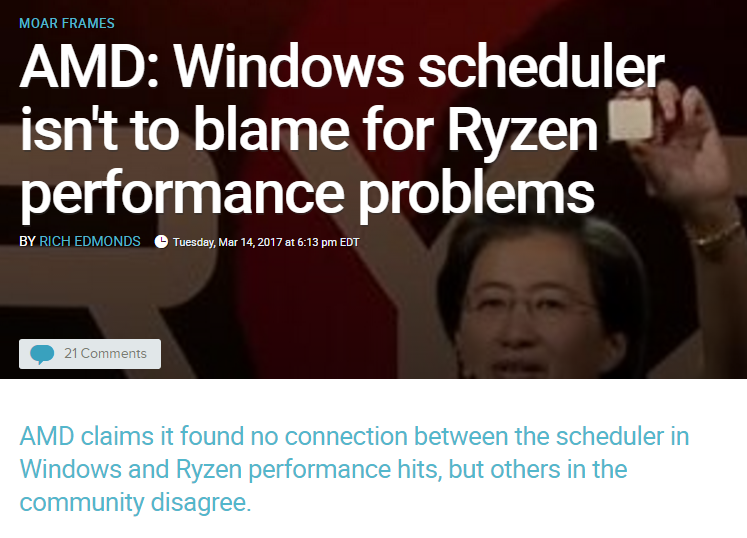Using only standardized benchmarks is all nice and fine, but also kinda boring since there’s bucketloads of this stuff online already. I wanted to see how Ryzen felt in actual use, especially when compared to my dual Xeon workstation in the office, so I made some silly little tests which may [or may not] give you a better clue on how the performance relates to daily usage.
The results I’m posting are mostly done on a stock 1800x. I’ve done a tiny bit of OC testing but since right now overclocking really isn’t 100% stable it felt silly to spend too much time on it just for the sake of having a bunch of numbers to show if I can’t be sure I’m actually gonna be using it like that. When things stabilize a bit I’ll probably update the post with newer results.
[On another side note, the results I got in that brief overclock were quite good! More on that later.]
I chose my office workstation as the main opponent here for a few reasons. The first is obvious, I have easy access to it. The second is that it’s a more or less typical rendering dude’s workstation setup [for CPU rendering that is, AKA real men’s rendering]. It’s a dual Xeon E5-2430 V2 – quite a popular model, a lot of folks have those in their workstations since it was kind of a best buy model for a while, and a single E5-2430 V2 is still more expensive than an 1800x, let alone two! 96GB DDR3 RAM @ 1600 Mhz, some SSDs, a GTX1070 and a Supermicro server board which has the same name as every other Supermicro board out there.
Although a bit dated, in total it would still cost more than the Ryzen build.
[And before you ask, no, I won’t go into ‘but you can get dem used Xeons for few moneyz on ebay!’ since that argument could be used for virtually anything. Besides, call me a purist, but I don’t like assembling PCs some schmuck’s greasy fingers touched. If the smell of new hardware could be made into a perfume I’d probably be the first to buy it.]
If I were to disregard the price of everything but the CPU/MBO combo, according to current EU prices, the Ryzen setup is approximately half the price [850 EUR vs 1650 EUR].
You’ll notice the workstation has DDR3 instead of DDR4, but hey, I’m not running a test lab here. The purpose of the experiment is to see if this cheaper Ryzen system is a valid replacement for a workstation like that.
Corona benchmarkI gotta say that out of all the benchmarks, so far I love Corona’s the best. It’s super simple, tests real world performance for 3d geeks like us and doesn’t take a long time to do. [I’d love to see a similar thing from Chaos Group as well sometime soon, hint-hint!] I also prefer a real-world measurement like render time, instead of an arbitrary point score like what cinebench does. That being said, let’s jump into the scores.
Just in case you’re wondering what ‘Bitsum Highest Performance’ is – it’s a special, highly optimized power scheme applied by a great little program called Process Lasso. [If you don’t already have it installed, I wholeheartedly recommend you check it out, it’s pretty cool!]
As you can clearly see from the results, Ryzen performs quite differently depending on the power plan. Which is very interesting, especially considering this:

The good news is that Ryzen beats my dual Xeon WS in rendering being just shy of 10% faster. Yay!
The bad news is that if we want to be nitpicky, by default we’re definitely not getting all the juice Ryzen has to give. Or are we?
Luckily for us, and AMD I suppose, the bad news isn’t true since the last windows update. [Got you scared there for a minute, huh?] Well, since my Windows updated to 14393.969, I could not replicate the power plan behavior anymore. Good thing I tested everything I planned to before the updates. But here’s some huge text to make it all clear and official:
All combinations I’ve tried with the latest windows update result in the same average render time of 2:22.
Before the salvo of updates I got in the last few days, I would get the same power plan behavior every time I tested, without exception.
Next page has even more interesting results, and if you click the button you get a free subscription to mandatory windows updates for life! How cool is that?

